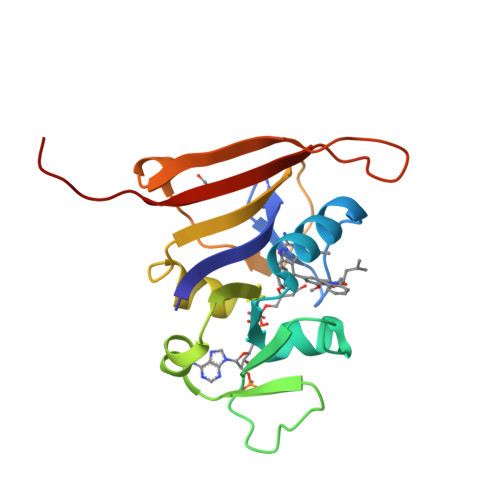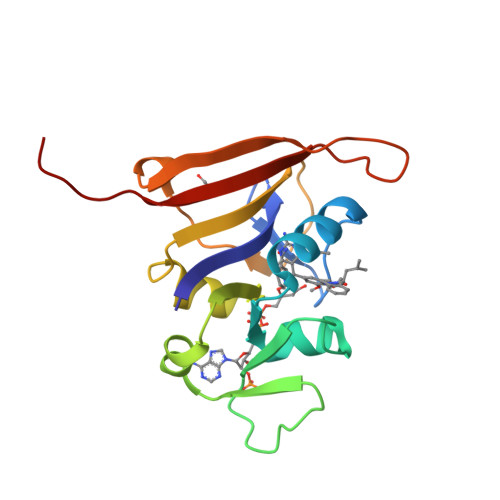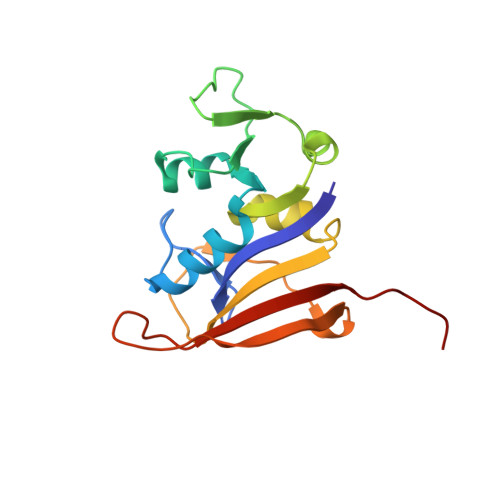Inhibition of Bacterial Dihydrofolate Reductase by 6-Alkyl-2,4-diaminopyrimidines.
Nammalwar, B., Bourne, C.R., Bunce, R.A., Wakeham, N., Bourne, P.C., Ramnarayan, K., Mylvaganam, S., Berlin, K.D., Barrow, E.W., Barrow, W.W.(2012) ChemMedChem 7: 1974-1982
- PubMed: 22930550
- DOI: https://doi.org/10.1002/cmdc.201200291
- Primary Citation of Related Structures:
4FGG, 4FGH - PubMed Abstract:
(±)-6-Alkyl-2,4-diaminopyrimidine-based inhibitors of bacterial dihydrofolate reductase (DHFR) have been prepared and evaluated for biological potency against Bacillus anthracis and Staphylococcus aureus. Biological studies revealed attenuated activity relative to earlier structures lacking substitution at C6 of the diaminopyrimidine moiety, though minimum inhibitory concentration (MIC) values are in the 0.125-8 μg mL(-1) range for both organisms. This effect was rationalized from three- dimensional X-ray structure studies that indicate the presence of a side pocket containing two water molecules adjacent to the main binding pocket. Because of the hydrophobic nature of the substitutions at C6, the main interactions are with protein residues Leu 20 and Leu 28. These interactions lead to a minor conformational change in the protein, which opens the pocket containing these water molecules such that it becomes continuous with the main binding pocket. These water molecules are reported to play a critical role in the catalytic reaction, highlighting a new area for inhibitor expansion within the limited architectural variation at the catalytic site of bacterial DHFR.
Organizational Affiliation:
Department of Chemistry, Oklahoma State University, Stillwater, OK 74078 (USA).





















